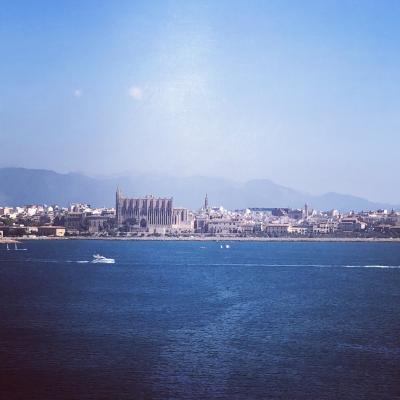In what ways does the Gothic Cathedral of Palma illustrate Mallorca's medieval history?
Similar Topics
gothic cathedral palma
mallorca medieval history
la seu cathedral
king james i
moorish mosque site
gothic architecture
antoni gaudí restoration
medieval stained glass
The Gothic Cathedral of Palma, also known as La Seu, stands as a striking symbol of Mallorca’s medieval history and cultural evolution. Its construction began in 1229, a date that coincides closely with King James I of Aragon’s conquest of the island, marking a significant turning point in Mallorcan history. The cathedral was deliberately built on the site of a former Moorish mosque, reflecting the Christian reconquest and the religious transformation that reshaped the island’s identity during the Middle Ages. This transition is embodied in the cathedral's imposing Gothic architecture, which was inspired by the great cathedrals of Europe, asserting the presence and power of Christianity after centuries of Islamic rule.
Architecturally, the cathedral illustrates the medieval period’s ambition and religious devotion through its soaring stone vaults, intricate stained glass windows, and the expansive nave that floods the interior with natural light. The large rose window, often called the “Gothic eye,” is a masterpiece of medieval craftsmanship and remains one of the largest in the world, symbolizing the celestial and spiritual aspirations of the era. Over the centuries, the cathedral has also absorbed various artistic influences and renovations, including work by the famous architect Antoni Gaudí in the early 20th century, which blends medieval structure with modern restoration efforts. Yet, the core of La Seu resonates with the medieval city’s social and religious life, mirroring the historical power shifts, artistic endeavors, and the Christian faith that dominated the island’s identity from the 13th century onward.
In essence, the Gothic Cathedral of Palma is not just a place of worship but a historical monument that encapsulates Mallorca’s transition from Moorish rule to Christian sovereignty. Its stone walls and artistic details narrate a story of conquest, faith, and community that defined the medieval period on the island. For visitors today, the cathedral offers an evocative glimpse into Mallorca’s past, making it a vital part of understanding the island’s rich and complex history.
Architecturally, the cathedral illustrates the medieval period’s ambition and religious devotion through its soaring stone vaults, intricate stained glass windows, and the expansive nave that floods the interior with natural light. The large rose window, often called the “Gothic eye,” is a masterpiece of medieval craftsmanship and remains one of the largest in the world, symbolizing the celestial and spiritual aspirations of the era. Over the centuries, the cathedral has also absorbed various artistic influences and renovations, including work by the famous architect Antoni Gaudí in the early 20th century, which blends medieval structure with modern restoration efforts. Yet, the core of La Seu resonates with the medieval city’s social and religious life, mirroring the historical power shifts, artistic endeavors, and the Christian faith that dominated the island’s identity from the 13th century onward.
In essence, the Gothic Cathedral of Palma is not just a place of worship but a historical monument that encapsulates Mallorca’s transition from Moorish rule to Christian sovereignty. Its stone walls and artistic details narrate a story of conquest, faith, and community that defined the medieval period on the island. For visitors today, the cathedral offers an evocative glimpse into Mallorca’s past, making it a vital part of understanding the island’s rich and complex history.
🧩 Related Questions
Related Question
What are some traditional Mallorcan recipes or dishes that feature local apricots?
Related Question
Is ensaimada available year-round at Celler Sa Premsa or only during special occasions?
Related Question
How can travelers ensure they do not accidentally trespass on private property in Mallorca?

